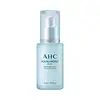What's inside
What's inside
 Key Ingredients
Key Ingredients

 Benefits
Benefits

 Concerns
Concerns

 Ingredients Side-by-side
Ingredients Side-by-side

Water
Skin ConditioningButylene Glycol
HumectantPolyglyceryl-6 Caprylate
EmulsifyingIsononyl Isononanoate
EmollientPanthenol
Skin ConditioningSodium Hyaluronate
HumectantHyaluronic Acid
HumectantSodium Acetylated Hyaluronate
HumectantHydroxypropyltrimonium Hyaluronate
Hydrolyzed Sodium Hyaluronate
Skin ConditioningSodium Hyaluronate Crosspolymer
HumectantPotassium Hyaluronate
Skin ConditioningHydrolyzed Hyaluronic Acid
HumectantHamamelis Virginiana Extract
AntiseborrhoeicCamellia Sinensis Leaf Extract
AntimicrobialChamomilla Recutita Extract
Skin ConditioningTrehalose
HumectantAllantoin
Skin ConditioningDipropylene Glycol
HumectantPolyglyceryl-6 Dicaprate
EmulsifyingDipotassium Glycyrrhizate
HumectantHydroxyacetophenone
AntioxidantPolyglyceryl-4 Lauryl Ether
EmulsifyingHydroxyethylcellulose
Emulsion Stabilising1,2-Hexanediol
Skin ConditioningXanthan Gum
EmulsifyingCaprylyl Glycol
EmollientDisodium EDTA
Malachite Extract
AntioxidantWater, Butylene Glycol, Polyglyceryl-6 Caprylate, Isononyl Isononanoate, Panthenol, Sodium Hyaluronate, Hyaluronic Acid, Sodium Acetylated Hyaluronate, Hydroxypropyltrimonium Hyaluronate, Hydrolyzed Sodium Hyaluronate, Sodium Hyaluronate Crosspolymer, Potassium Hyaluronate, Hydrolyzed Hyaluronic Acid, Hamamelis Virginiana Extract, Camellia Sinensis Leaf Extract, Chamomilla Recutita Extract, Trehalose, Allantoin, Dipropylene Glycol, Polyglyceryl-6 Dicaprate, Dipotassium Glycyrrhizate, Hydroxyacetophenone, Polyglyceryl-4 Lauryl Ether, Hydroxyethylcellulose, 1,2-Hexanediol, Xanthan Gum, Caprylyl Glycol, Disodium EDTA, Malachite Extract
Butylene Glycol
HumectantGlycerin
HumectantDipropylene Glycol
HumectantNiacinamide
SmoothingCodium Tomentosum Extract
Skin ProtectingEnteromorpha Compressa Extract
Skin ProtectingUndaria Pinnatifida Extract
Skin ConditioningGlycereth-25 PCA Isostearate
EmulsifyingEthylhexyl Palmitate
EmollientArtemisia Princeps Leaf Extract
Skin ConditioningCarbomer
Emulsion StabilisingTromethamine
BufferingXanthan Gum
EmulsifyingCetyl Ethylhexanoate
EmollientHydroxyethylcellulose
Emulsion StabilisingEthylhexylglycerin
Skin ConditioningSea Water
HumectantParfum
MaskingAdenosine
Skin ConditioningPolyglyceryl-10 Oleate
Skin ConditioningBiosaccharide Gum-1
HumectantDisodium EDTA
Trehalose
HumectantSodium Hyaluronate
HumectantHydrogenated Lecithin
EmulsifyingPropanediol
SolventCaprylic/Capric Triglyceride
MaskingZinc PCA
HumectantButyrospermum Parkii Butter
Skin ConditioningMyrothamnus Flabellifolia Leaf/Stem Extract
HumectantCeramide NP
Skin ConditioningCholesterol
EmollientCeramide As
Skin ConditioningCeramide Ns
Skin ConditioningAscorbic Acid
AntioxidantCitric Acid
BufferingCeramide AP
Skin ConditioningEucalyptus Globulus Leaf Extract
PerfumingAsiaticoside
AntioxidantAsiatic Acid
Skin ConditioningPhytosphingosine
Skin ConditioningMadecassic Acid
Skin ConditioningMagnesium PCA
HumectantSodium Lactate
BufferingCopper Tripeptide-1
Skin ConditioningSerine
MaskingSucrose
HumectantUrea
BufferingGlycine
BufferingCalcium Chloride
AstringentPotassium Hydroxide
BufferingOrnithine
Skin ConditioningSea Salt
AbrasiveAlanine
MaskingMagnesium Chloride
Threonine
Histidine
HumectantAspartic Acid
MaskingButylene Glycol, Glycerin, Dipropylene Glycol, Niacinamide, Codium Tomentosum Extract, Enteromorpha Compressa Extract, Undaria Pinnatifida Extract, Glycereth-25 PCA Isostearate, Ethylhexyl Palmitate, Artemisia Princeps Leaf Extract, Carbomer, Tromethamine, Xanthan Gum, Cetyl Ethylhexanoate, Hydroxyethylcellulose, Ethylhexylglycerin, Sea Water, Parfum, Adenosine, Polyglyceryl-10 Oleate, Biosaccharide Gum-1, Disodium EDTA, Trehalose, Sodium Hyaluronate, Hydrogenated Lecithin, Propanediol, Caprylic/Capric Triglyceride, Zinc PCA, Butyrospermum Parkii Butter, Myrothamnus Flabellifolia Leaf/Stem Extract, Ceramide NP, Cholesterol, Ceramide As, Ceramide Ns, Ascorbic Acid, Citric Acid, Ceramide AP, Eucalyptus Globulus Leaf Extract, Asiaticoside, Asiatic Acid, Phytosphingosine, Madecassic Acid, Magnesium PCA, Sodium Lactate, Copper Tripeptide-1, Serine, Sucrose, Urea, Glycine, Calcium Chloride, Potassium Hydroxide, Ornithine, Sea Salt, Alanine, Magnesium Chloride, Threonine, Histidine, Aspartic Acid
 Reviews
Reviews

Ingredients Explained
These ingredients are found in both products.
Ingredients higher up in an ingredient list are typically present in a larger amount.
Butylene Glycol (or BG) is used within cosmetic products for a few different reasons:
Overall, Butylene Glycol is a safe and well-rounded ingredient that works well with other ingredients.
Though this ingredient works well with most skin types, some people with sensitive skin may experience a reaction such as allergic rashes, closed comedones, or itchiness.
Learn more about Butylene GlycolDipropylene Glycol is a synthetically created humectant, stabilizer, and solvent.
This ingredient helps:
Dipropylene glycol is technically an alcohol, but it belongs to the glycol family (often considered part of the ‘good’ alcohols). This means it is hydrating and gentle on skin unlike drying solvent alcohols like denatured alcohol.
As a masking agent, Dipropylene Glycol can be used to cover the smell of other ingredients. However, it does not have a scent.
Studies show Dipropylene Glycol is considered safe to use in skincare.
Learn more about Dipropylene GlycolDisodium EDTA plays a role in making products more stable by aiding other preservatives.
It is a chelating agent, meaning it neutralizes metal ions that may be found in a product.
Disodium EDTA is a salt of edetic acid and is found to be safe in cosmetic ingredients.
Learn more about Disodium EDTAHydroxyethylcellulose is used to improve the texture of products. It is created from a chemical reaction involving ethylene oxide and alkali-cellulose. Cellulose is a sugar found in plant cell walls and help give plants structure.
This ingredient helps stabilize products by preventing ingredients from separating. It can also help thicken the texture of a product.
This ingredient can also be found in pill medicines to help our bodies digest other ingredients.
Learn more about HydroxyethylcelluloseSodium Hyaluronate is hyaluronic acid's salt form. It is commonly derived from the sodium salt of hyaluronic acid.
Like hyaluronic acid, it is great at holding water and acts as a humectant. This makes it a great skin hydrating ingredient.
Sodium Hyaluronate is naturally occurring in our bodies and is mostly found in eye fluid and joints.
These are some other common types of Hyaluronic Acid:
Learn more about Sodium HyaluronateTrehalose is a disaccharide made of two glucose molecules (glucose is sugar!). Trehalose is used to help moisturize skin. It also has antioxidant properties.
As a humectant, trehalose helps draw moisture from the air to your skin. This helps keep your skin hydrated.
Due to its antioxidant properties, trehalose may help with signs of aging. Antioxidants help fight free-radical molecules, unstable molecules that may damage your skin.
In medicine, trehalose and hyaluronic acid are used to help treat dry eyes.
Some animals, plants, and bacteria create trehalose as a source of energy to survive freeze or lack of water.
Learn more about TrehaloseXanthan gum is used as a stabilizer and thickener within cosmetic products. It helps give products a sticky, thick feeling - preventing them from being too runny.
On the technical side of things, xanthan gum is a polysaccharide - a combination consisting of multiple sugar molecules bonded together.
Xanthan gum is a pretty common and great ingredient. It is a natural, non-toxic, non-irritating ingredient that is also commonly used in food products.
Learn more about Xanthan Gum